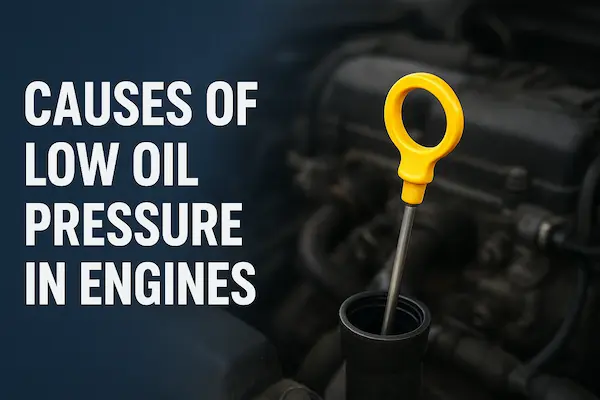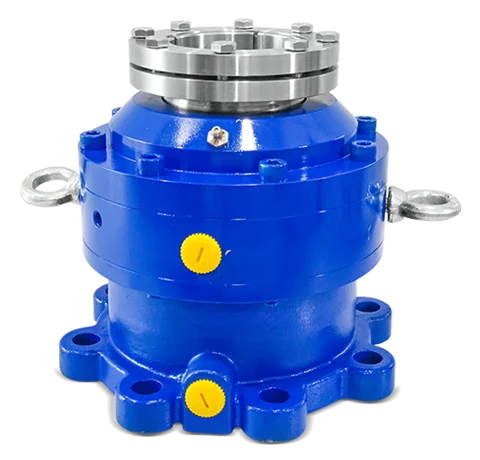Posted At: Jun 03, 2025 - 595 Views

Causes of Low Oil Pressure in Engines: A Seal-Centric Guide
When your engine’s oil pressure warning light turns on, it’s more than just a mild concern—it’s a signal that something inside your engine isn’t working as it should. Low oil pressure can lead to increased friction, overheating, and potential engine damage if ignored.
In this blog, we’ll explore the main causes of low oil pressure in engines, how mechanical seals and oil seals play a crucial role in maintaining proper lubrication, and the best ways to prevent pressure drops in the long run.
What Is Oil Pressure and Why It Matters
Oil pressure is the force that circulates engine oil through vital components like bearings, camshafts, and pistons. It ensures that each moving part is properly lubricated, minimizing metal-to-metal contact.
When oil pressure drops, lubrication fails, leading to wear, overheating, and in severe cases, engine seizure. Proper oil pressure depends on three main factors:
Oil quality and viscosity
Oil pump efficiency
Sealing integrity
Common Causes of Low Oil Pressure
Let’s break down the key reasons your engine might be suffering from low oil pressure.
1. Insufficient Oil Level
The most common cause of low oil pressure is simply not having enough oil. If the oil level is too low, the oil pump can’t circulate enough lubricant, leading to pressure drops. This could be due to leakage through worn-out gaskets or oil seals, or even evaporation from extended engine operation.
Solution: Check oil levels regularly and inspect for leaks around seals, drain plugs, and oil pans.
2. Oil Pump Wear or Damage
The oil pump is the heart of your lubrication system. Over time, its internal gears or rotors can wear out, reducing its ability to maintain adequate pressure. Contaminated oil or poor maintenance accelerates this wear.
Solution: Replace damaged oil pumps promptly. Use clean, high-grade lubricants to extend pump life.
3. Oil Filter Blockage
A clogged oil filter restricts oil flow, increasing resistance and reducing pressure. Filters that aren’t replaced during regular maintenance can accumulate sludge, dirt, and metallic debris.
Solution: Replace oil filters at recommended intervals to maintain smooth circulation.
4. Incorrect Oil Viscosity
Every engine is designed for a specific oil viscosity. If the oil is too thin, it will flow too easily and fail to maintain pressure. If it’s too thick, it can cause excessive resistance during startup.
Solution: Always use oil grades recommended by your engine manufacturer, especially when operating in extreme temperatures.
5. Bearing Wear
Over time, main and rod bearings lose their tight clearance due to friction and wear. As clearance widens, oil escapes faster, dropping pressure throughout the system.
Solution: Routine oil analysis and timely bearing inspection help identify wear before it causes major pressure loss.
6. Oil Leakage from Damaged Seals and Gaskets
Faulty or worn oil seals, O-rings, and gaskets can allow oil to escape from the lubrication system. Even small leaks around shaft seals can lead to gradual oil loss, lowering overall pressure and increasing contamination risks.
Solution: Inspect mechanical and oil seals regularly, especially around crankshafts, camshafts, and pumps. Replace them with high-quality, precision-engineered seals from trusted suppliers like QMSeals.
The Role of Mechanical Seals in Maintaining Oil Pressure
Mechanical seals act as barriers that prevent fluid leakage between rotating and stationary components. In engines and pumps, they keep the lubricant inside and contaminants outside.
When seals fail, the consequences can be severe:
Oil leakage leading to pressure drops
Air ingress causing cavitation
Increased wear due to insufficient lubrication
At QMSeals, our advanced oil seals and mechanical seFal designs are engineered to handle high temperatures, pressure fluctuations, and corrosive environments—ensuring reliable oil retention and long-lasting performance.
Symptoms of Low Oil Pressure in Engines
Recognizing early warning signs can prevent major engine damage. Common symptoms include:
Illuminated oil pressure warning light
Tapping or knocking noises from the engine
Burning oil smell
Overheating or poor performance
Visible oil leaks under the vehicle
If you notice any of these, stop the engine immediately and perform a thorough inspection.
How to Fix Low Oil Pressure
Here are a few practical steps to restore oil pressure:
Check oil level and top up if necessary
Replace the oil filter to ensure smooth flow
Inspect seals and gaskets for leaks
Verify the oil pump’s functionality
Use the correct oil viscosity as per engine specifications
Conduct periodic maintenance to detect seal wear early
Preventive Maintenance Tips for Seal Longevity
Since seals are essential for maintaining oil containment, proper maintenance can dramatically extend their lifespan:
Use high-quality mechanical seals designed for your specific engine or pump application
Avoid overheating and high-speed operation without proper lubrication
Keep oil clean by changing it at regular intervals
Regularly inspect for seal hardening, cracks, or surface wear
Store spare seals in a clean, dry environment to prevent material degradation
Why Choose QMSeals for Oil Seal Solutions
At QMSeals, we design and manufacture premium mechanical and oil seals engineered for durability and precision. Our seals help industries and automotive applications maintain stable oil pressure, reduce wear, and prevent leakage even in demanding environments.
Whether you need rotary shaft seals, cartridge seals, or oil seals, our team ensures every component meets international standards for performance and longevity.
👉 Explore our range of oil seals and sealing solutions:www.qmseals.com/
Frequently Asked Questions:
1. What causes low oil pressure in diesel engines?
Diesel engines often experience low oil pressure due to oil pump wear, clogged filters, or high engine temperatures causing oil thinning.
2. Can a bad oil seal cause low oil pressure?
Yes. A failing oil seal can lead to external leaks or internal oil bypass, directly lowering system pressure.
3. How can I increase oil pressure in my engine?
Ensure proper oil levels, replace old filters, fix leaks, and maintain seal integrity. If pressure remains low, the pump or bearings may need servicing.


